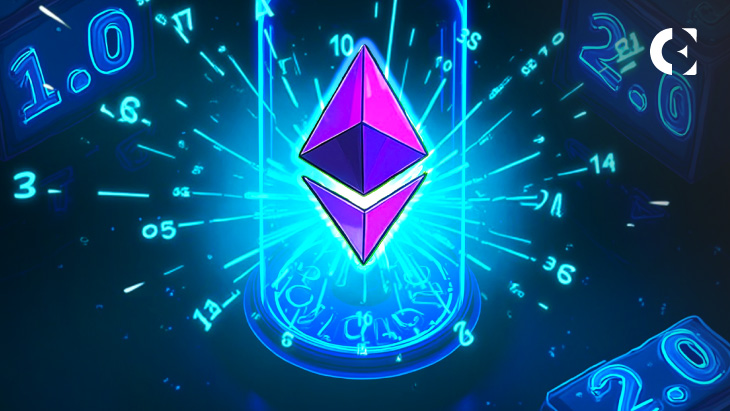After the inception of Bitcoin in 2009, the crypto environment had another remarkable member – Ethereum. Conceived by Vitalik Buterin in 2013, the network was officially launched on July 30, 2015. Ethereum enabled developers to build decentralized apps and smart contracts on its network, making it the backbone for DeFi, NFTs, and even Web3.
However, despite its benefits, Ethereum faced setbacks like slow transactions, high fees, and energy concerns, following which it underwent a major transformation called The Merge.
Table of contents
The Significance of The Merge
The Merge was a planned technical upgrade to switch Ethereum’s consensus mechanism from Proof of Work (PoW) to Proof of Stake (PoS), marking a pivotal event in Ethereum’s history. In its earlier PoW consensus, it worked in the same mechanism as that of Bitcoin, wherein miners solved complex mathematical puzzles to unlock blocks. This method used extensive energy, but after its shift to the PoS consensus mechanism, Ethereum became eco-friendly.
In the PoS, ETH is locked or staked to help run the network and earn rewards. Although the upgrade made the system faster, eco-friendly, and compatible with future requirements, it did not compromise on the users’ interaction with the network, which in itself is a big plus.
Apart from reducing energy usage from 112TWh/year to 0.04 TWh/year and the shift to a new consensus mechanism, the upgrade to Merge has dropped the ETH issuance by nearly 90%. Along with ETH burning, this has helped to combat inflation, thus making Ethereum’s supply growth slower and much deflationary.
Reasons for the Merge
Environmental Concerns
One of the main concerns for the shift of the network is the high amount of energy consumed during mining. With the shift to PoS, energy has been reduced drastically.
Scalability
The Merge was a key step in Ethereum’s long-term plan to scale, enabling future upgrades like sharding and rollups by laying the foundation for a modular, flexible network structure.
Efficiency
Earlier, in the PoW setup, the network’s efficiency was reduced due to miners, but after the Merge upgrade and in a new setup, block rewards were greatly reduced with the lack of miners. Further, with low issuance of ETH, inflation also reduced. Thus, by combining these factors with ETH burning, the network has improved the long-term value for holders and stakers.
Participation
Staking allows more people to secure the network, not just those with expensive hardware. This enabled getting more validators and reduced dependency on large mining pools and centralized operators.
Technical Proof
After the Merge, Ethereum successfully demonstrated complex, global, and decentralized upgrades across participants, reinforcing community confidence without disrupting the network.
The Upgrades of Ethereum Till Date
After the development of Ethereum to the Merge i
Shanghai / Capella (March 2023)
Enabled stakers to withdraw their staked ETH and rewards, completing Ethereum’s transition to Proof of Stake and unlocking liquidity, which was previously locked since the Beacon Chain launched in 2020.
Dencun (March 13, 2024)
Introduced Proto-Danksharding (EIP-4844), adding temporary “blob” storage to reduce data costs for Layer-2 rollups, significantly lowering transaction fees and improving scalability across Ethereum’s expanding ecosystem.
Pectra (May 7, 2025)
Launched 11 EIPs focused on staking flexibility, smart wallets (social recovery, contract accounts), MEV resistance, and Layer-2 improvements, laying the groundwork for mainstream Ethereum use with more accessible features.
Surge (Upcoming)
Will implement full Danksharding, splitting Ethereum into many shards to massively boost transaction capacity and lower congestion, aiming to scale the network by 100 times.
Verge & Purge (Upcoming)
Focus on data efficiency with Verkle trees and EVM simplification, making full node syncing faster and reducing storage requirements, allowing more users to run nodes and keep the network decentralized.
Splurge (Upcoming)
A set of user-focused upgrades that improve experience, developer tools, and security — includes account abstraction and wallet flexibility, making Ethereum smoother and more intuitive to use.
Conclusion
The Merge was a big turning point for Ethereum. By switching to Proof of Stake, it solved major problems like high energy use, slow speeds, and heavy reliance on miners. Since then, Ethereum has added new features through updates like Shanghai, Dencun, and Pectra — making it cheaper to use, easier for people to join, and more secure. Future upgrades like Surge and Verge will make the network even faster and lighter. Altogether, these changes are helping Ethereum grow into a stronger, more user-friendly platform that can support the next generation of apps and digital tools.
Disclaimer: The information presented in this article is for informational and educational purposes only. The article does not constitute financial advice or advice of any kind. Coin Edition is not responsible for any losses incurred as a result of the utilization of content, products, or services mentioned. Readers are advised to exercise caution before taking any action related to the company.









